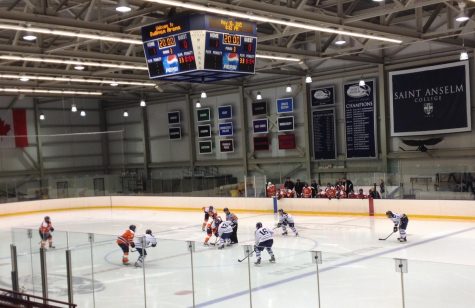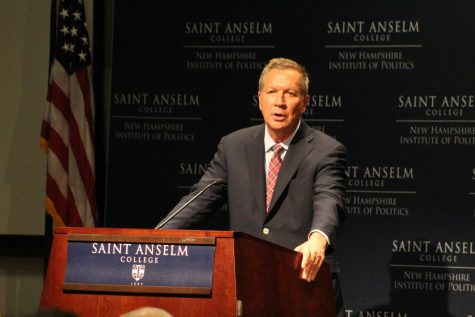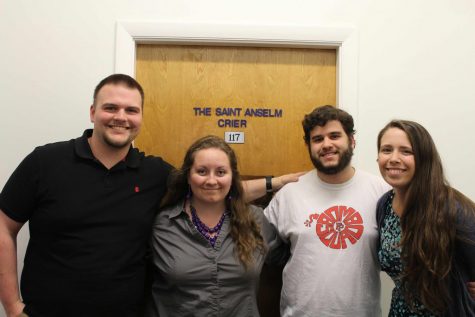Saint Anselm College fights to improve retention rate of students
February 22, 2017
The retention rate of colleges has been falling over past years, and that has led to the ranking of so many colleges based on retention rates.
St. Anselm is ranked 57th in the nation in terms of retention rate, as far as the Open Education Database reports, and has a retention rate of 87%. The Crier asked Dean Joiner what the college is doing to decrease the number of students who choose not to come back to St. Anselm.
Dean Karlea Joiner, elaborated on the many ways that St. Anselm is trying to increase retention rate in the college. “our retention rate is quite good, and in comparison to the national average we are in a good position and have been for sometime. If anything we are very proactive as a college in maintaining a good retention rate,” said Dean Joiner.
And proactive is a very apt word for the leaps and strides that St. Anselm college is making in an effort to keep students coming back year to year. “The retention committee, like the sophomore experience committee, is a campus wide collaboration” Dean Joiner mentions.
Beyond the retention committee, St. Anselm is hiring a new Chief Diversity Officer, to help minority students feel more welcome on campus and continue to improve on St. Anselm’s inclusive environment, and investing on infrastructure around the school, which improves the convenience on college grounds and entices students to remain hopeful about further upgrades in the years to come.
For the most part, it is freshmen students who leave the college. Speaking to Dean Anne Harrington, who lead the Retention Committee, who said, ““Retention” in higher education is the percentage of full time students who enter in their freshmen year and return in their sophomore year. In any college/university in the country there is an acceptable and appropriate amount of attrition (students leaving) every year, depending on whether the college is public or private, two or four year, the demographics, and level of selectivity. In other words, no college retains 100% of their students.”
Freshmen aren’t the only one to leave a college, however, as it can occur in student’s sophomore and junior year. Though far less likely, it does happen. “The term “persistence” is used for students who are retained from sophomore year until graduation. Generally, an acceptable percentage of loss between sophomore and junior year is about half of the percentage of loss from freshmen to sophomore year. So, in other words, if a college loses 10% of its freshmen, it expects to lose about 5% of its sophomores to juniors. Our persistence rate from sophomore to junior year is 86%, which is highest on record, and our persistence rate from junior to senior year is 80%, which is 4% higher than our 10 year average,” said Dean Harrington
The problem isn’t so easily solved as introducing new exciting changes to the college to keep students coming back, but the main challenge that the college suffers from is addressing the problems that are already present. Students can suffer from financial, social, academic, and personal issues that would cause them to leave St. Anselm. Again these are small aspects, and considering how many students choose to stay year after year, the college fits most student needs already.
“There are so many things that Saint A’s does to support students ranging from providing a rigorous and diverse core curriculum, academic support – in and out of the classroom, research opportunities, academic advisement, a vibrant residential experience, student activities, athletics, mentoring, targeted programming, reviewing retention and attrition data to problem solve, a range of dietary options, mental health counseling, etc.” said Dean Harrington.
It can be hard to deal with these issues, especially since they don’t necessarily all have simple answers. The questions themselves are not simple in themselves. Retention itself is an imperfect process, as there are just so many subjective factors that occur whenever humans are involved.
“In general, retention is not the job of one person, department/office, or division; students at any college are retained because of an integrated system of academic and social opportunities, options, and support; financial options and support; and emotional/mental health resources and support, to only name a generalized few. Having said this, even the most supportive and well-resourced campus in the world and the most well connected and engaged student may not be retained on a given campus because there are so many factors that impact whether a student stays or leaves. Retention is an imperfect science,” said Dean Harrington.
The facts seem to agree with her, leaving the college in the position to continue to try improve the retention rate.











